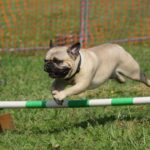How Essential Is Horse Jump Equipment?
If you plan on going to a horse jump competition, you will need to know how essential it is to have the right horse jump equipment. These include breeches, gloves, PVC pipe, and High-density polyethylene (HDPE). There are many types of horse jump equipment and understanding what you need is an excellent way to prepare for a successful jumping competition.
Breeches
Breeches are a classic type of riding apparel. They come in a variety of styles and colors. Riding breeches are designed to offer durability and support, making them ideal for daily equestrian activities. The styles vary by discipline, with full-seat breeches worn by dressage riders and knee patch breeches worn by hunter/jumper competitors.
Breeches are a great way to keep warm on a chilly day, especially if they have advanced microfibers that can wick away moisture from the body. Softshell breeches are especially popular for winter riding. They are lightweight, comfortable, and offer good thermal insulation. These breeches are also very durable and can withstand various weather conditions.
High-density polyethylene (HDPE)
High-density polyethylene (HDPE) is a material that is widely used in industrial applications. It is known for its durability and flexibility. In addition to being resistant to impact, it is also remarkably impervious to many chemical compounds.
Polyethylene is a partially crystalline solid. It is produced by stranding ethylene molecules together. The molecular structure is symmetric and does not have any polar groups.
Polyethylene has high electrical conductivity and excellent dielectric properties. However, its melting temperature is relatively low. Therefore, a higher temperature is required for the polymer to be stable.
A nonlinear elastic-viscoplastic constitutive model was developed to understand the behavior of HDPE under cyclic loading. This model is based on a parallel theological framework. Moreover, it was calibrated using relaxation-unloading tests.
PVC pipe
PVC pipe is a valuable and inexpensive material for making horse jumps. Aside from the obvious advantages, such as durability, PVC is also available in various colors and designs.
It’s important to note that while a PVC jump is a viable option, there are better solutions than this one. Unlike wood, PVC will splinter and shatter in freezing weather, putting your horse at risk. Using a combination of resilient materials is the best way to go.
One of the most remarkable ways to jump is to create one with legs. This simple and practical solution can be found at most building supply stores.
Gloves
Gloves are essential to horse jump equipment for most equestrians. They protect from blisters and calluses. Riding gloves also improve your grip on the reins. If you are a new rider, having the proper riding gear is especially important.
There are three types of gloves. Each class offers different benefits. Choosing the right pair of gloves will depend on the hazard and task.
Leather gloves are popular for tasks that require heat or abrasion. The texture of the leather will affect the feel of the glove. Some leathers provide a soft and comfortable feel, while others are durable. You can find leathers with varying skill levels, but they all protect your hands.
Gridwork
Gridwork is an essential part of any horse jump training program. It helps improve a horse’s footwork and teaches them to use their bodies properly. A young horse can learn the best place to get around the competition course with gridwork.
To start, a good plan is to build a first grid in the middle of a paddock. This will help you and your horse figure out what’s going on without external interference. Then, you can add to the grid as you progress.
Gridwork should be practiced in conjunction with jumping single fences. The most effective way to do this is to set up a series of different-sized jumps at a measured distance.
Understanding the phases of a horse’s jump
If you want to improve your horse’s jumping performance, it pays to understand the phases of a jump. This information will help you determine whether or not you are doing things correctly, and it can also prevent injury.
The first phase in a horse’s jump is the approach. During this phase, horses bend their elbows and use the long brachiocephalic muscle, which runs from the top of their neck to their withers. They also lift their heads to assess the fences ahead of them.




